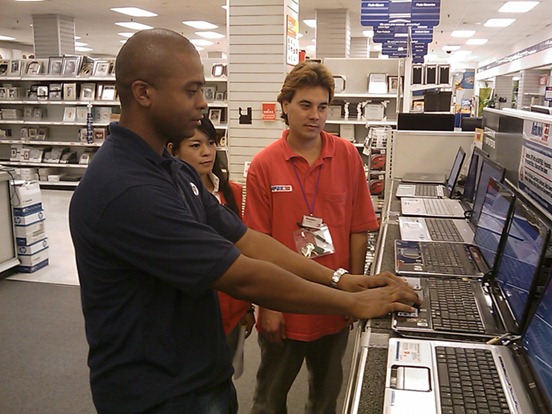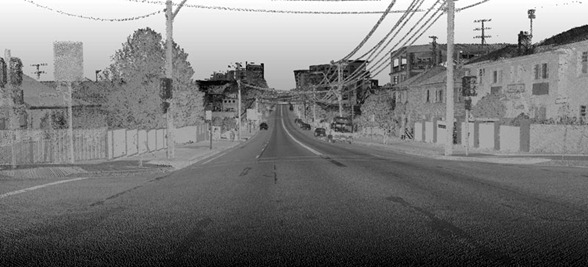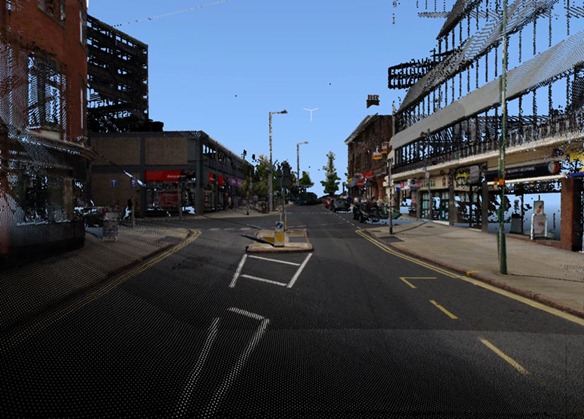An exploration of order from chaos in #SecondLife
In a recent article on Metaverse Tribune, entitled Emergent Selves: Extrapolating on the Concept of Autopoiesis there exists the general notion of Avatar as Extension of Self. As well as the article begins, I must confess it seemed to degrade into a fashion post by the end and more or less missed the bigger point which I was expecting to be made in the context of the topic at hand.
Being a blogger myself, this isn’t much of a problem because it just gives me a reason to write another post going into some details that I believe were sorely missed.
We first begin by saying that the idea of autopoiesis generally means that your mind doesn’t distinguish between virtual context of self and actual context of self. Your avatar, or digital persona as I usually call it, for all intents and purposes is nothing more than an extension of self however limited that particular sliver of self you are presenting may be.
As a personal context, we’ll use myself as the example.
The picture above is my virtual world avatar Aeonix Aeon in Second Life. It looks a lot more like my real self than many people realize, but is not entirely a dead reckoning of my real life visual appeal. There are limitations to how well I can mimic my own person from real life, and more to the point there are definite reasons why I would want to limit my virtual representation to only what I believe is how I perceive myself in my own mind.
By virtual world standards, my avatar persona is quite tame and even *gasp* mundane. I represent myself in a virtual context as I actually am (within reason). The virtual self (persona) is still an idealized version of myself in real life, but as an extension of self Aeonix Aeon is Will Burns in the same manner as Mark Twain is Samuel Clemens.
Oddly enough, I am actually an anomaly in the virtual world according to statistics, in that I do not have a single ALT account in Second Life, nor do I have any reason to use such. This is actually quite a rare occurrence if you think about it.
So let’s get a little further context on this Multiple Personality Order before we go any further, shall we? In a research paper from 2011, Dr. Richard Gilbert over at Loyola Marymount University provided some really good insight into this phenomenon, writing in the research paper The Distributed Self - Virtual Worlds and the Future of Human Identity:
The rise of 3D virtual worlds and the introduction of avatar-mediated forms of expression and interaction has the potential to once again reshape humanity’s conception and experience of the self and usher in a fourth stage of identity, one which can be termed “The Distributed Self” (Gilbert, Foss, & Murphy, in press). In this conception, consciousness and aspects of the self will be increasingly externalized and distributed into 3-dimensional digital forms (i.e. avatars) reflecting any number of combinations of age, gender, body type, race, ethnicity, style, personality, and physical health. Several studies have shown, for instance, that participants in 3D virtual environments such as Second Life often create avatars that, relative to their physical self, are younger, have a better body or physical appearance, and are ascribed a more positive or idealized personality (Au, 2007; Bessiere, Seay, & Kiesler, 2007; Gilbert, Foss, & Murphy, in press). Less frequently, they choose avatars with a different gender, ethnicity, or skin color (Wallace & Marryott, 2009, Duchenaut, Wen, Yee, & Wadley. 2009). Moreover, Gilbert, Foss, & Murphy (in press) estimate that among the overall user base of Second Life, 18% have a single “alt” (i.e. a secondary or alternative avatar) in addition to their primary avatar; 32% operate two or more alts; and that in approximately 70% of these cases one function of the alt or alts is to experiment with different aspects of identity or personality.
Taken as a whole these data indicate that about a half of active users of Second Life are coordinating a multiple personality system consisting of a physical self plus two virtual identities (a primary avatar and one alt) and about a third are coordinating an identity system involving 4 or more components (a physical self and three or more virtual identities). As depicted in Figure 4, when the allocation of consciousness to non-immersive digital forms such as email, Facebook, Twitter, or Linked In is added to the physical and 3D virtual components of the overall identity system, the structure of the self becomes more like an organizational flowchart rather than the singular entity in modernist conceptions, or the diverse, but device constrained, model of post-modernism.
The multiple personality order (personas) actually have a lot to do with the original idea of autopoiesis. If we do not readily differentiate between virtual selves and our real self, then mentally the distributed self is the real self as well. Which, in turn, leads one to believe that all of your ALTs are actually an extension of varying facets of your inner self in a multiple personality extrapolation. Normally when this happens in the real world, we consider it something akin to Multiple Personality Disorder in our mind, but in the outward enabling world of technology, we are free to explore multiple personalities as if it is common and unhindered.
The reason this is really interesting in the case of autopoiesis is that if we do not distinguish the virtual self from the real self, then we are not any particular singular version of our persona but instead we are likely the average of the sum of personas we maintain. The more we identify with our personas the more (and faster) we drift in the direction of our idealized embodiment over time.
In keeping with the reference point of myself, when I originally entered into the context of virtual environments, I represented myself in a virtual context as a more idealized version of my real self in that my real self was roughly 250lbs at the time and my virtual self was much more of a healthy weight (maybe 160-180lbs). Because our personas in conjunction with our real life self constitute the sum of the average of the total, the farther from that average our personas represent, the more (over time) our real selves tend to drift toward that average. This, of course, is barring physical or sociological limitations that would inhibit such transition.
In my personal case, making my virtual self a more idealized version of my real self offered the logical idealized version of my real self and over time I began to drift toward what my mind saw as the idealized version in real life. Starting at 250lbs when I was younger, my idealized persona represented how I saw myself in an idealized version and due to autopoiesis I did not distinguish the virtual self from my real self, while my real self adjusted accordingly to the average of the two – drifting further toward the idealized version of persona in reality.
Figure 4: The Distributed Self
In the case of multiple personality order (The Distributed Self), wherein we are within the context of more than a singular extrapolation of self in persona – in short; Wherein we are maintaining multiple alternate personalities in the context of the virtual world (and even real world), each personality construct is a logical extension of a singular aspect of who we idealize ourselves to be but not to be taken as a whole individually.
The totality of our personas are the culmination of the average of all facets, which includes our real life self in collaboration with our virtual identities of idealism.
Whether we are utilizing personas (ALTs) in the context of exploration of self or abilities, or whether we are using them as a liberation from self-imposed or very real constraints in our otherwise “real” world, the more extreme the personas represent away from our real life, the more they represent how we associate our true selves as an average of our real self plus that persona or the culmination of personas.
This understanding of Multiple Personality Order in conjunction with Autopoiesis has a profound conclusion in that the idealized version of ourselves constitutes an internal view of oneself which, over time, constitutes actual change in oneself in order to match the reality to our virtual. The average of the total culmination of our personas represents the true self as time shifted in the future embodiment.
More or less we are speaking about the idea of mind over matter, or more appropriately the ability of the mental construct to impose real change over oneself and the environment when given sufficient personification or a mental signpost to aspire to over time.
Personas are often not the extrapolation or extension of what we already are, but instead represent what we are not but would like to aspire to be.
The more personas we maintain, the more aspects we believe we are lacking in our combined self but would like to aspire to be, or at the very least fill a perceived deficiency which we feel cannot be obtained under ordinary circumstances. The longer we maintain our idealized personality constructs, the more we embody them over time, if we already are not from the start.
In this context, the more you associate yourself with your personas as an extension of self and not as a separate entity from the whole, the more your personas are able to enact change on the whole. This is why there are two camps in the virtual world train of thought:
- Augmentationist
- Immersionist
An augmentationist sees their persona(s) as extensions of self and an embodiment of who they are, whereas the immersionist sees their personas as entirely different entities with no relation to their real self or connection. For the most part, I would reckon that a wide majority of virtual world inhabitants associate themselves as immersionists and keep a perceived separation between their avatar and their real life self – what they do as an avatar self is wholly separate as a person from their real life self.
As an immersionist, and because of the preconceived notion of persona separation from the core self, one is not likely to actively enact change in the core self as a result of the extensions of self in a virtual context. I liken this to the equivalent of wishful thinking but no action taken (or available to follow through).
The augmentationist, on the other hand, embodies the connection to their persona(s) and as such embodies the follow through of action to drift toward the idealized version as put forth. There is also a much higher sense of accountability with augmentationists because in their mind they are not making a distinction for their persona as a separate person, but as themselves.
However, this being said, even the immersionist is subject to autopoiesis and limited augmentationist application, in that however much you role-play as a separate entity, your imagination becomes your embodiment over time and you begin (even subconsciously) to drift toward the average of yourself and your persona(s) the longer you inhabit them in any context – even if that change is internal.
The danger that I see (personally) in the immersionist approach is that because of the separation of self from the accountability of your persona, you are far more likely to act in a manner which would be immoral, reprehensible and outright damaging to others (and yourself) because you feel no reason to fear consequences for your virtual actions. In relation to autopoiesis, this means that over time you will begin to embody the traits of your personas in your real life self, whether you intended to or not, and if those traits are wholly negative, then the immersionist persona in conjunction with autopoiesis will eventually become damaging to the self.
While some may be able to keep this in proper check and engage in a healthy role-play as a separation of self, far more are clearly unable to maintain this over time and fall prey to their own self-created demons. In this understanding of the two differentiations, I will not state that maintaining an immersionist persona or multiple immersionist personas is impossible without far reaching and damaging consequences, but I will state unequivocally that there is a much higher probability under this situation than with an augmentationist persona.
































